BeWell - Digital Therapy App
The Question
How might we make it easier for people to overcome mild and moderate stress, anxiety and depression?
The Problem
Roughly 20% of Americans suffer from a behavioral health condition like stress, depression or anxiety. But the United States faces a supply shortage of behavioral healthcare providers as well as stigma- and logistics-related access barriers that prevent people from receiving care.
Health plans struggle to meet member demand for services. Psychiatrist shortages result in long wait times that leave health plans vulnerable to low member satisfaction ratings and penalties or even lawsuits from regulators for failing to provide the minimum level of coverage.
Consumers face limited behavioral health provider networks, long wait times and often lack clarity about what level of care is right for them or how they can access and pay for it. As a result, many people forgo treatment.
Employers face rising healthcare costs and high prevalence of untreated behavioral health conditions that result in low productivity and higher medical costs for employees.
The Goal
My goal was to validate the viability, feasibility and desirability of a consumer-directed digital therapy program.
My Process
- Customer & subject matter expert interviews
- User value mapping
- Lean startup canvas
- User research & journey mapping
- User story mapping to define MVP
- Wireframing
- Prototyping & user testing
Discovery
The process began with stakeholder interviews, shadowing and brainstorming with subject matter experts.
I led a value-mapping workshop with behavioral healthcare providers, health plan representatives and patient advocates to understand health plan and patient pain points and motivators.
(images blurred intentionally)
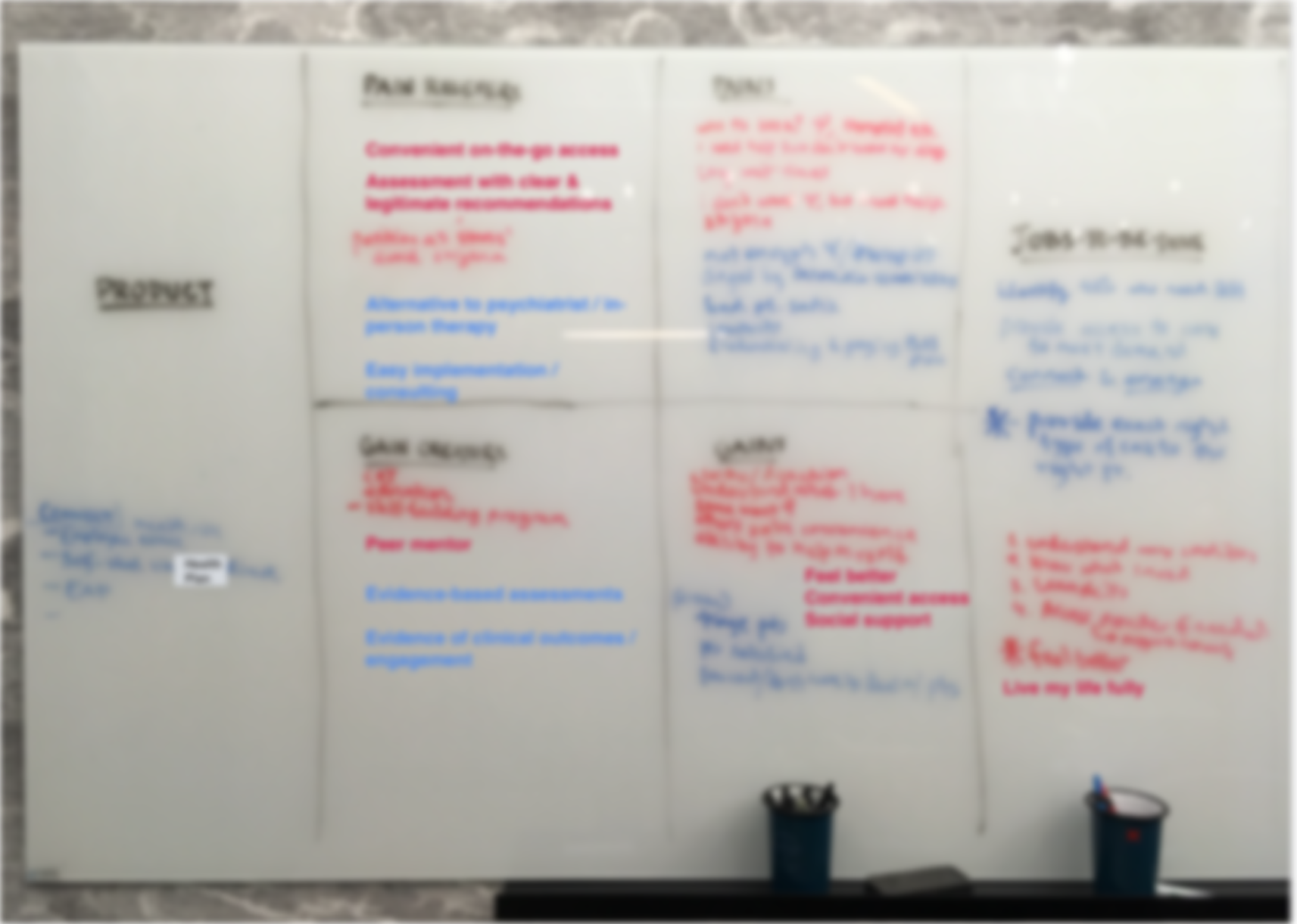
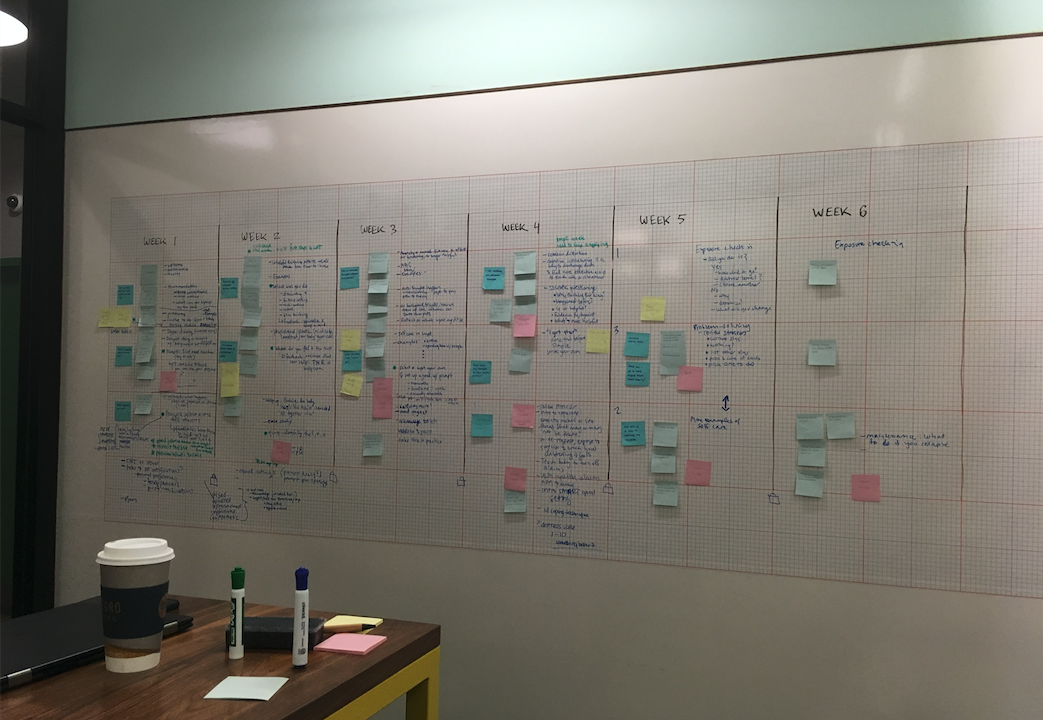
Next I used the lean startup canvas to hash out hypotheses about the core value prop and business model.
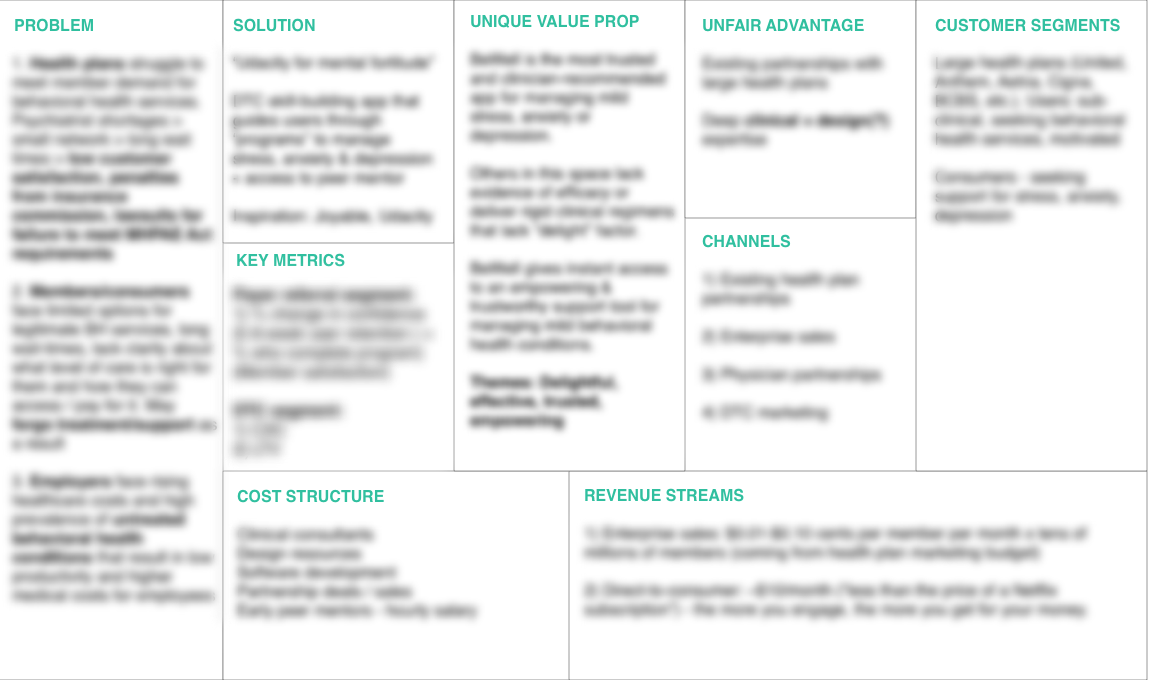
Design
To understand the user (health plan member) I carried out "secret santa shopping" on two health plans and interviewed three patients.
As I learned, I filled in a journey map outlining the functional, emotional and social needs that a person experiences throughout the course of seeking certain healthcare services.
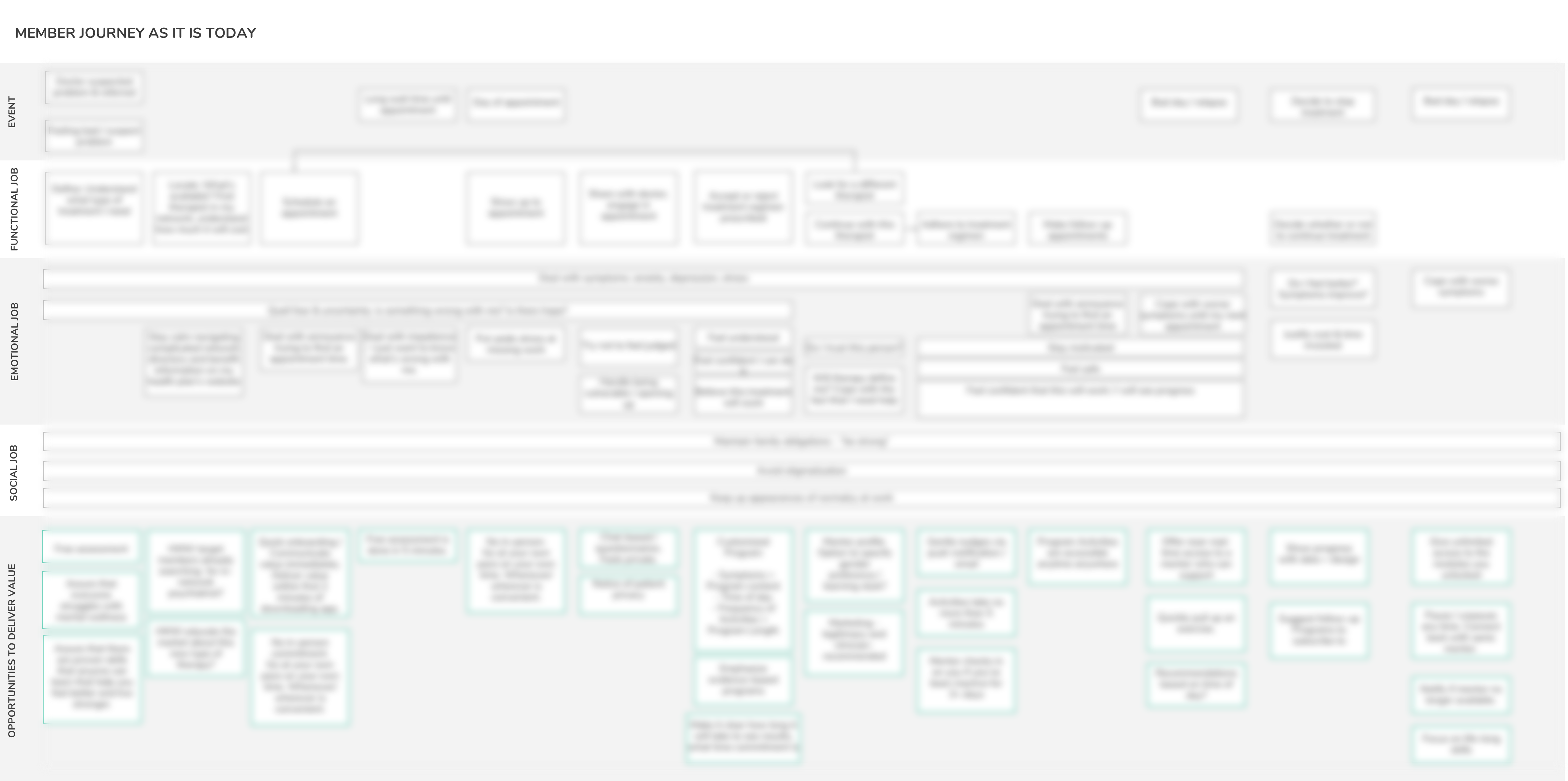
I also distilled the core job-to-be-done (JTBD) to keep top-of-mind throughout the design process. This is the ultimate job the product needs to accomplish for the user.

The next steps in the process involved user-story-mapping and slicing out a minimum viable chunk of functionality that could achieve the core JTBD.
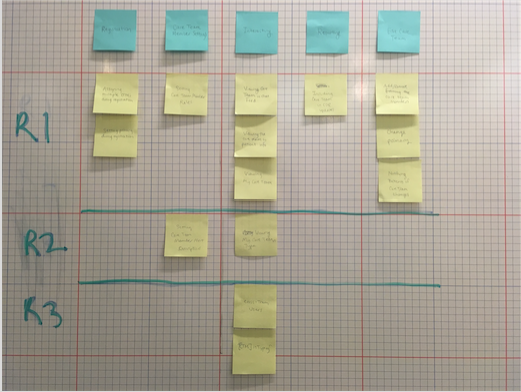
From there I went through a few drafts of low-fidelity sketches and wireframes before putting together the "wireflow" for the app.
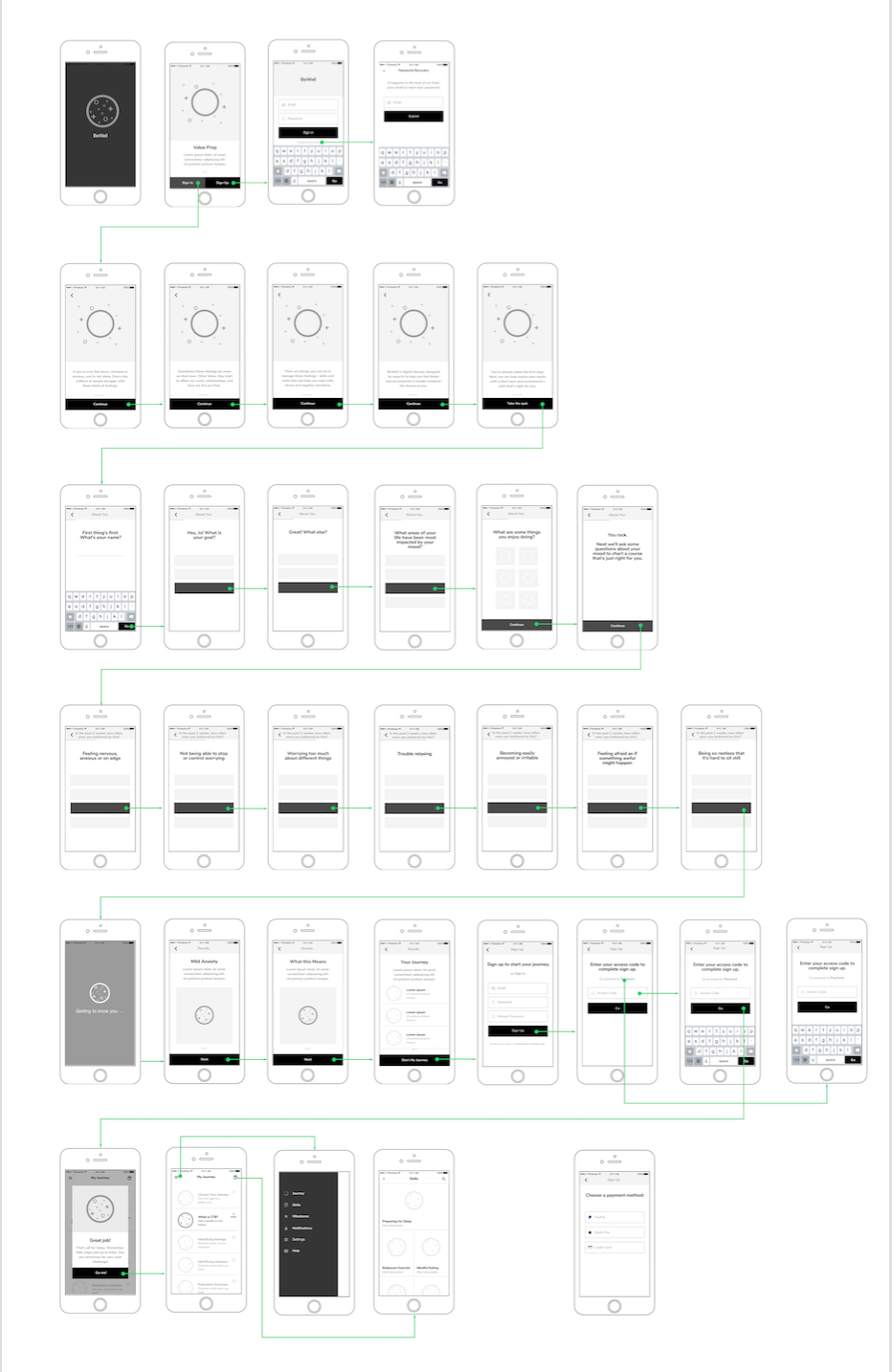
Future Work
To continue the process of validation and iterative design, my next steps are to prototype the early wireframes and test with a small cohort of patient users.